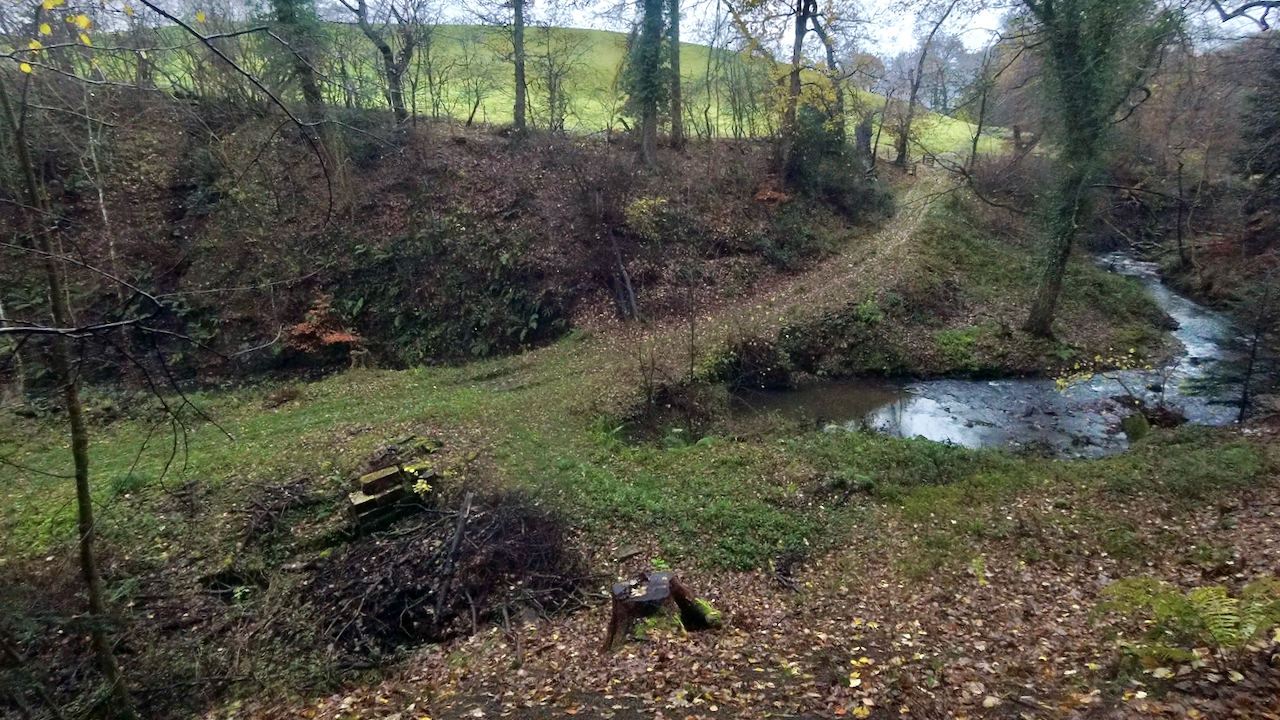The woodland floor becomes airy and light. New vistas are opened up.
Climbing up the steep path from the River Leven through Bleach Mill Intake my interest was piqued by a stack of dressed stones in the defile below.
Although I don’t think the stones are in their original position they are evidence of the bleach mill that once occupied this spot prior to it being destroyed in 1840 when heavy rains caused two fish ponds![]() upstream near Kildale Hall to burst their banks and release a 30ft. torrent down the gorge1NYM Flood History – Esk, Rye, Pickering Beck, Derwent, Leven. Available at https://www.jbatrust.org/wp-content/uploads/2020/09/Yorkshire-Rye-and-N-York-Moors.pdf.
upstream near Kildale Hall to burst their banks and release a 30ft. torrent down the gorge1NYM Flood History – Esk, Rye, Pickering Beck, Derwent, Leven. Available at https://www.jbatrust.org/wp-content/uploads/2020/09/Yorkshire-Rye-and-N-York-Moors.pdf.
As well as wiping out this mill, the manorial corn mill — built beside the Old Meggison waterfall![]() — was also damaged. And many miles downstream, a weir in Great Ayton collapsed which put two mills in that village out of action.
— was also damaged. And many miles downstream, a weir in Great Ayton collapsed which put two mills in that village out of action.
At a time when wool was a mainstay of the local economy, this lower mill was devoted to fulling, the beating of woven or knitted cloth to cleanse it of oils and dirt, and to make it shrink by friction and pressure. The end result is a smooth, tight fabric that is water repellent, a bit like felt.
With a decline in the wool industry, flax began to be grown locally and weaved into linen. But raw flax produces a yellowy cloth — hence ‘flaxen‘ — and would have ‘added value’, to use the modern jargon, by whitening or bleaching the linen cloth.
In a bleaching or beetling mill, the linen, soaked in buttermilk or soapwort, is pounded below heavy beams to give a flat, lustrous effect. The cloth is then laid out in the bleachfields to complete the bleaching process by exposure to sunlight. These bleachfields were probably up by Bleach Mill Farm![]() .
.
After 1840, the mill is thought to have been repaired and used as a saw mill and as a bone mill (for the rendering down of bone into fertiliser) but by 1928 it was a ruin2North York Moors Historic Environment Record (HER) Nos.: 6699/6700.
I read that sunstantial foundations and the waterwheel pit survive below the undergrowth and brash pile but the landowner is very protective so I didn’t investigate. The mill race however runs alongside the riverside path for quite a distance. It was originally fed from a stone dam but later replaced by a earthen dam closer to the mill.
- 1NYM Flood History – Esk, Rye, Pickering Beck, Derwent, Leven. Available at https://www.jbatrust.org/wp-content/uploads/2020/09/Yorkshire-Rye-and-N-York-Moors.pdf
- 2North York Moors Historic Environment Record (HER) Nos.: 6699/6700

Leave a Reply